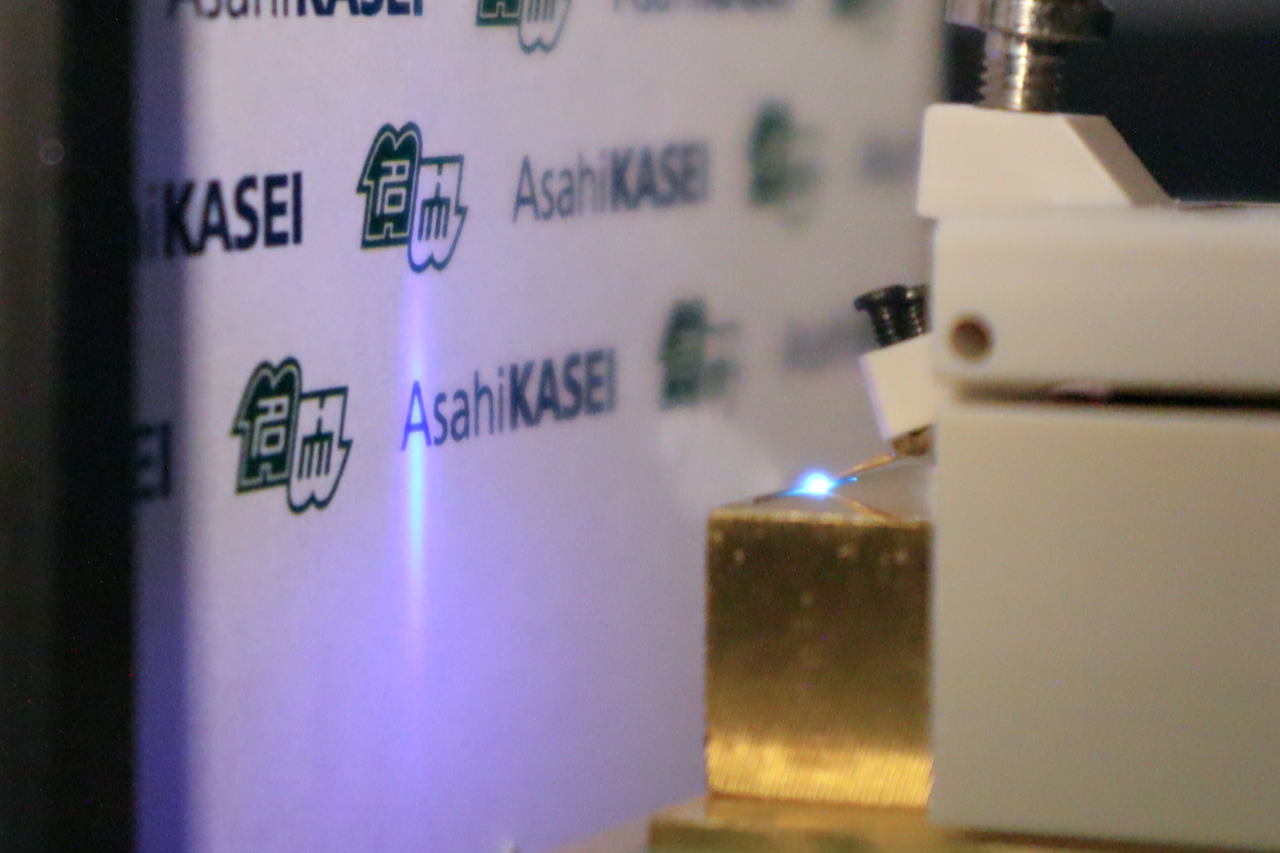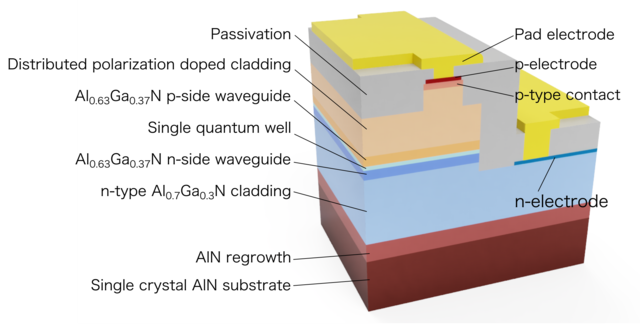
(c) 2019 Asahi Kasei Corp. and Nagoya University
This is the claim of scientists at Nagoya University, Japan who worked with the Asahi Kasei Corporation on the record-breaking laser diode. The research is published in Applied Physics Express.
In a statement, Prof Chiaki Sasaoka of Nagoya University's Centre for Integrated Research of Future Electronics said, "Our laser diode emits the world's shortest lasing wavelength, at 271.8nm, under pulsed [electric] current injection at room temperature.”
Solid start for laser research
Previous efforts in the development of ultraviolet laser diodes had only managed to achieve emissions down to 336 nm, Sasaoka said.
Laser diodes that emit short-wavelength ultraviolet light (UV-C) and is in the wavelength region of 200 to 280 nm, could be used for treating skin conditions such as psoriasis, or gas and DNA analysis.
The Nagoya University deep-ultraviolet laser diode is claimed to overcome several issues encountered by scientists working on these semiconducting devices.
The team used a high-quality aluminium nitride (AlN) substrate as their base for building up the layers of the laser diode. They say this is necessary, since lower quality AlN contains numerous defects that impact the efficiency of a laser diode's active layer in converting electrical into light energy.

(c) 2019 Asahi Kasei Corp. and Nagoya University
The university added that in laser diodes, the 'p-type' and 'n-type' layer are separated by a quantum well. When an electric current is passed through a laser diode, positively charged holes in the p-type layer and negatively charged electrons in the n-type layer flow towards the centre where they combine and release photons.
The researchers designed the quantum well so that it would emit deep UV light. The p- and n-type layers were made from aluminium gallium nitride (AlGaN). Cladding layers, also made from AlGaN, were placed on either side of the p- and n-type layers. The cladding below the n-type layer was doped with silicon impurities to modify the material's properties. The cladding above the p-type layer underwent distributed polarisation doping, which dopes the layer without adding impurities. The aluminium content in the p-side cladding was designed with the highest amount at the bottom and less towards the top. The researchers believe this aluminium gradient enhances the flow of positively charged holes. A top contact layer was finally added that was made from p-type AlGaN doped with magnesium.
The researchers found that the polarisation doping of the p-side cladding layer meant that a pulsed electric current of "remarkably low operating voltage" of 13.8V was needed for the emission of ‘the shortest wavelength reported so far.’
The team is now said to be conducting advanced joint research with Asahi Kasei Corporation to achieve continuous room temperature deep-UV lasing for the development of UV-C semiconductor laser products.




Report highlights significant impact of manufacturing on UK economy
Note to Evil Villain/Dave 2020. Thatcher was PM for _11_ years, from 1979 to 1990 so no one under the age of 34 was even born when she left office....